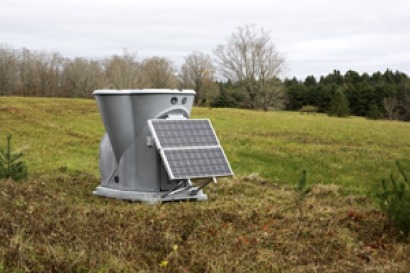
The data have been gathered over 3700 deployments, spanning 45 countries and six continents, where Triton has been used to provide accurate wind measurements at sites both under development and in operations. In addition, Triton units have achieved a fleet-wide median up-time of 99.93 percent – a testament to the robust nature of the device.
“The Triton is a real workhorse when it comes to all aspects of wind measurement worldwide and reaching 20 million hours shows the system’s leading position in the market” said Pascal Storck, Head of Renewable Energy at Vaisala. “That’s just shy of 2,300 years of collected wind data, and that number not only demonstrates Triton’s consistency and reliability, but also reflects a growing appreciation among developers and operators for the system’s versatility compared to traditional met masts and other available measurement options.”
The Triton Wind Profiler’s global deployment statistics illustrate the evolving applications of remote sensing technology by wind energy developers and operators in both established and emerging markets. Analysis of market-specific usage patterns over the past nine years reveals trends that correspond closely to the progress and overall maturity of those markets.
In the more established European and US wind markets, there have been close to 2,600 deployments of the Triton, facilitating a range of uses in both site planning and operations. On the planning side, as the height and capacity of modern turbines has increased, the Triton has been widely used as an easier and more cost-effective alternative to static met towers throughout the early phases of development, from site assessment to turbine siting.
Vaisala Triton Wind Profiler global deployments (Vaisala)
Simultaneously, as these markets and their wind projects mature, Triton is increasingly being deployed to help optimise wind assets. Today the system is commonly used at operational wind parks to provide permanent met reference information, model wake effects, conduct power performance testing and validate anemometry equipment. The recent introduction of the International Electrotechnical Commission (IEC) standard for the use of remote sensors in power performance testing is expected to drive a further increase in deployments at operational projects and will be the subject of an upcoming webinar hosted by Vaisala
Since 2008, the remote territories and emerging wind markets of Australia, Asia, Africa and Latin America have seen well over 900 Triton deployments. As these nascent markets continue to develop, there is often a greater emphasis on identifying suitable sites for development, across terrain that is frequently complex.
Key emerging markets in which the Triton has seen significant numbers of deployments include Brazil, China and South Africa. Here, its reliability and ease of transportation has seen the remote sensing system play an important role in prospecting, helping developers and independent engineers to quickly identify the most promising sites for wind farm development – and, in the process, drive regional growth.
The robust nature of the Triton – which has conducted successful measurement campaigns while enduring temperatures of -40 degrees Celsius north of the Arctic Circle and hurricane-force winds on the US East Coast – is backed up by an equally robust support network. Vaisala’s SkyServe online platform enables users to monitor data gathered by the Triton, but also allows the company’s own team of technicians to assess the performance of the global fleet and ensure as little downtime as possible.
For additional information:

